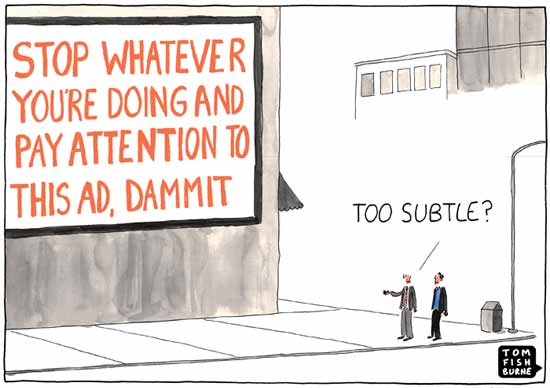![]()
 ^^ our goal is to get people to TURN UP. How do we get that online?
^^ our goal is to get people to TURN UP. How do we get that online?
Let’s face it: people browsing for “stuff” online are easily distracted. There are a ton of “other things” they could be doing, other than paying attention to you.
So, how do you break through the noise and get people to “turn up” when you want them to?
“For commitment to happen, there has to be a value exchange. Most people think that means giving away stuff for nothing. In reality, it means building up a habit of fair exchange and micro-commitments from both sides. It all adds up, big time.”
In other words, if you want to really build a longterm author career, you need to focus on delivering the RIGHT value to the RIGHT people at the RIGHT time. And then get those readers to show their commitment to you before ever asking for the sale.
And it all starts with WHO you target, WHERE, and WHEN, and HOW – in a way that pulls readers towards you and grows your influence.
Examples:
If you’re a fiction author, you are in the market of entertaining people. Which means, you need to compete with cat videos, Facebook, video games, and a whole host of other “entertainment” that people can get on demand any time they like.
If you’re a non-fiction author, you’re up against cynicism, procrastination, and a ton of other “life factors” that stop people from taking action on the information and teaching they need (or even worse, you’re dealing with people who don’t even know they need what you can teach them). On top of that, there are a million free youtube videos that probably cover what you teach. Why should people listen to you?
This is where the “PULL” approach comes in (remember “push vs pull” from the previous page?).
Most people use the brute-force approach to force people to listen. Relentless ads, retargeting, sales pitches… to as wide an audience as possible. Hoping to see “what sticks” (note: most of it won’t stick and you’ll have to work hard to figure out what does).
But that approach doesn’t work any more.
Think of it like this…
Whether you’re writing fiction or non-fiction, chances are you’re using ads right now. That means, you’re trying to get someone to stop what they’re doing right now and go do something completely different.
Example: a reader on Facebook is checking out what their friends are up to. They’re NOT looking for a book to buy.
Someone on YouTube is looking for the latest movie trailer or funny cat video (or in the case of my kids, Ryan Toy’s Review – grrrr). Some people might be looking for “how to” videos.
And the list goes on.
You’re relying on someone being excited enough about what you’ve got to offer to STOP what they’re doing right now and go do something that’s most likely completely different to what they were doing a second ago. In other words, you’re interrupting them.

Do you think that’s easier to do in a “push” fashion, or a “pull” fashion?
In other words, are people more easily attracted by what YOU want or by what THEY want?
I’m not going to give you the answer because it’s pretty obvious. Your job is to show up in the RIGHT place to the RIGHT people and make the RIGHT offer.
Seth Godin has this to say about “interruption marketing”:
“The interruption model is extremely effective when there’s not an overflow of interruptions. But there’s too much going on in our lives for us to enjoy being interrupted anymore. So our natural response is to ignore the interruptions. Permission marketing is the privilege (not the right) of delivering anticipated, personal and relevant messages to people who actually want to get them”
So, what does all this mean?
In short, your goal is to create something of value, and present it to the right people at the right time.
That doesn’t mean trying to convince random people to buy your book. That means cultivating trust and influence by giving the right people something valuable BEFORE money ever changes hands.
Reaching the right people.
That’s the first step.
The next step is to get commitment from your readers. Filtering out the ones who aren’t a good fit for you, and focusing on those who will LOVE you. Giving something away is fine, but there has to be a fair value exchange for your offer to mean anything.
Understanding what it takes to create that value exchange, and how to use it to lead your readers “down the path” towards the sale is how you build a long-lasting business of raving fans.
Let’s talk about that in more detail on the next page.